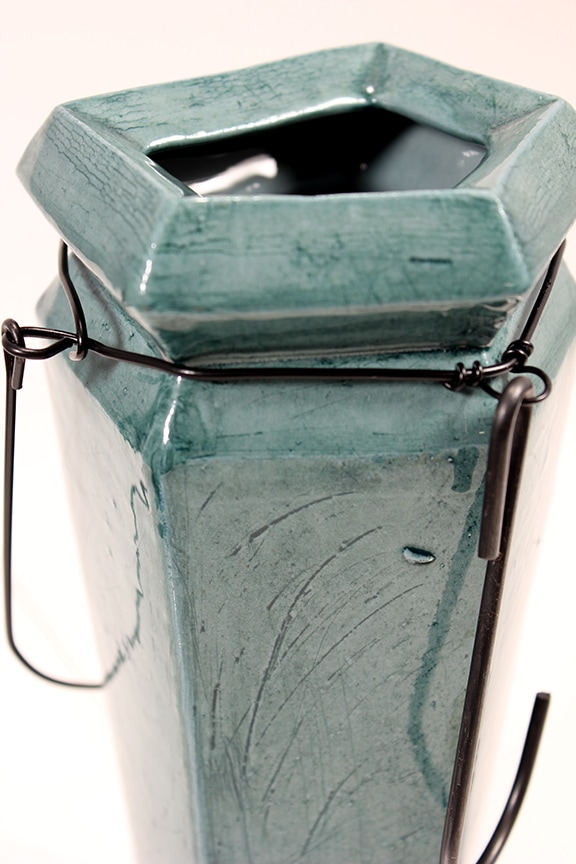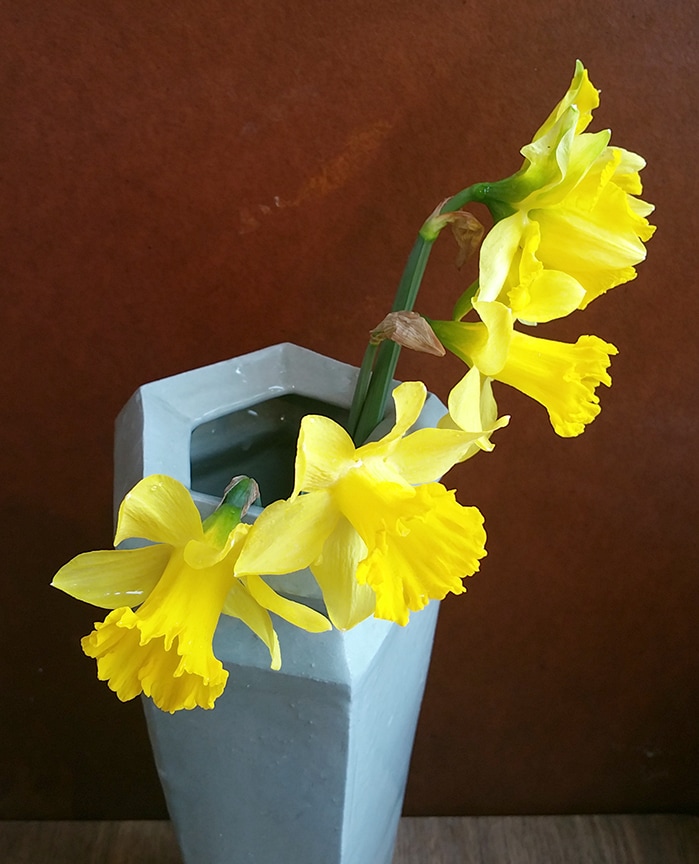|
One of the first projects I tackled in this residency was designing and producing a commissioned ceramic humidifier for a close friend. Being very foreign to older types of radiators (and let's be honest, new ones too), I had no idea the type of heat they could produce until I visited Chicago for the first time during the New Year. Having multiple radiators in a 500-600 ft space creates a lot of dryness. (I was amazed at how quickly the dishes dried after hand washing.) So, my friend requested a more natural solution to her humidifying needs.
Ceramic humidifiers are also incredibly low maintenance versus electronic ones and last indefinitely barring any breakage. The only maintenance would be refilling and making sure there is no bacteria build up inside the vessel. A few drops of tea tree oil and/or vinegar in the water should do the trick in eliminating any build up, but it might not be necessary with everyone's water supply. During the warmer months, I wanted the humidifier to double as a vase, so I included a handle for easy transport and a removable hanging hook for table top placement. Users need to make sure the vase is on a secure, flat surface where hands or paws won't knock it over. The tapered base is more stable with liquids inside, and I've included the ridge along the mouth of the vase to prevent any spills, but accidents do happen. I'm really quite pleased with the final look of the turquoise humidifiers. My test with my gray casting slip and glaze combo did not come out as I wanted, but I think adding daffodils to anything can make it lovely. I'm going to do some more tests with these guys and see what I can come up with. Here is a slideshow of my mold making process. This can give you an idea of my thoughts while constructing the prototype and mold. Enjoy!
5 Comments
Amy L
10/27/2018 05:48:13 pm
Did you end up making these evaporative humidifiers? We're looking for some!
Reply
Moira Knutson
3/10/2020 12:03:00 pm
I'm looking for some radiator humidifiers, yours look very interesting! Do you sell them?
Reply
Jess Ensminger
12/28/2020 03:50:35 pm
I'm also looking to purchase some radiator humidifiers. Let me know if you are selling some.
Reply
1/5/2023 05:46:21 am
I agree. Using a humidifier during winter to maintain a favorable 40-60% humidity level in your home can produce the following benefits prevent the spread of airborne viruses and bacteria, improve health recovery time, improve snoring, treat dry winter skin, and more.
Reply
Leave a Reply. |
AuthorMitzi Davis, ceramic artist and owner of MFWH My Old Blog Still Exists!Lots of ceramic arts techniques and processes that I use in my studio can be found in my old blog site. Click on the button below to head that way!
Archives
March 2017
Categories |



 RSS Feed
RSS Feed